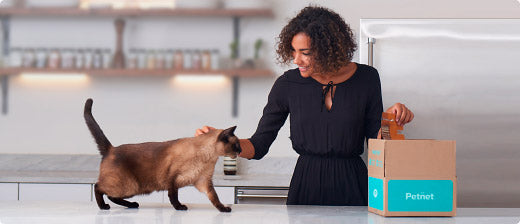Like with human foods, the FDA requires that ingredients in pet food are “safe” before they can be included in a recipe. Many pet owners think that if the FDA has approved an ingredient for use in pet food, it must be safe for their pets. Further, some pet food companies will also point to the fact that some of their ingredients are considered by the FDA to be safe for human consumption, so that is proof that the ingredient is perfectly appropriate for your pet. One good example is propylene glycol, an FDA-approved food additive that’s also in human foods like salad dressing and cake mix. It is also a key ingredient in antifreeze.
Based on the way most people feed their pets, I would argue that FDA approval of an ingredient, even if it is approved for human consumption, does not mean that it should be fed to pets.
What does FDA Ingredient Approval Mean? When the FDA evaluates a food ingredient, they look at several factors. The FDA website summarizes the evaluation process as follows. When evaluating the safety of a substance and whether it should be approved, FDA considers: 1) the composition and properties of the substance, 2) the amount that would typically be consumed, 3) immediate and long-term health effects, and 4) various safety factors. The evaluation determines an appropriate level of use that includes a built-in safety margin - a factor that allows for uncertainty about the levels of consumption that are expected to be harmless. In other words, the levels of use that gain approval are much lower than what would be expected to have any adverse effect.
The FDA will use terms like “generally recognized as safe”, or GRAS, to classify additives that are allowable in pet foods, like artificial colors and preservatives. When making their decisions, they look at the research and the intended use of the additive to make (or reject) GRAS. Taking a step back for a second, the idea that a food ingredient is even classified as GRAS should raise some red flags. How come it is not “unequivocally recognized as safe” or completely and totally safe”?
The general idea is that even if an ingredient might cause harm for large doses, if it is included in small enough levels (the intended use), it can obtain FDA approval for use in food. On some level, this makes sense. Although it doesn’t make me want to switch back to drinking those colorful sodas full of artificial colors. But for most pet owners, extra caution should be used when evaluating their pets’ food.
The Cumulative Effect of Eating Unhealthy Foods Although I don’t recommend it, feeding a dog or cat a food with dubious albeit FDA approved ingredients for a few days will probably not have much of an impact on the pet’s health. But what happens when the pet is being fed these ingredients every day, multiple times per day, for months or years?
Propylene glycol is approved for human consumption and is used in things like salad dressing and cake mix, and the FDA has deemed it safe in the amounts that are used in such items. However, would the FDA feel the same way if they thought that salad dressing and/or cake mix were going to be eaten for breakfast, lunch, and dinner, each and every day, for weeks and possibly years on end, much like many pet owners feed their pets the same pet food over and over? Just think about the cumulative amount of these ingredients that are passing through your pet’s bodies. Over time, the result could be bad.
With so many pet foods to choose from, why would a pet owner take the chance? If an ingredient is artificially made or if it has the potential to cause harm, I recommend avoiding that food altogether. There are thousands of pet foods to choose from, many of which are formulated without including artificial preservatives and colorings that have to be classified as GRAS.

 Food
Food
 Food
Food
 Food
Food
